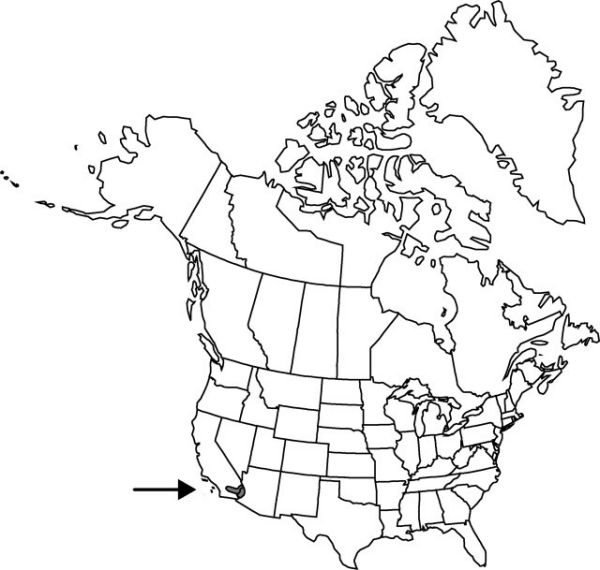Allium parishii
Proc. Amer. Acad. Arts 17: 380. 1882.
Bulbs 1–2, not clustered on primary rhizome, without stalked basal increase bulbs, ovoid, 1–1.5 × 0.8–1.3 cm; outer coats enclosing bulbs, brown to reddish brown, membranous, lacking cellular reticulation or cells arranged in only 2–3 rows distal to roots, ± quadrate, without fibers; inner coats pinkish to reddish brown, cells obscure, ± rectangular, vertically elongate. Leaves persistent, withering from tip by anthesis, 1, basally sheathing, sheath not extending much above soil level; blade solid, terete, 5–30 cm × 1–3 mm. Scape persistent, solitary, erect, solid, terete, 5–25 cm × 1–3 mm. Umbel persistent, erect, compact, 6–15-flowered, hemispheric, bulbils unknown; spathe bracts persistent, 2–3, 5–7-veined, ovate, ± equal, apex acuminate. Flowers narrowly campanulate, 12–18 mm; tepals erect, spreading at tips, pale pink with darker midveins, lanceolate to lance-linear, ± equal, inner slightly shorter and narrower than outer, margins entire, apex acute, becoming rigid in fruit; stamens included; anthers yellow; pollen yellow; ovary crested; processes 6, prominent, ± triangular, margins entire to irregularly denticulate; style linear, equaling stamens; stigma capitate, scarcely thickened, minutely 3-lobed, lobes stout, ± spreading; pedicel 5–15 mm. Seed coat dull or shining; cells minutely roughened. 2n = 14.
Phenology: Flowering Apr–May.
Habitat: Rocky, sandy desert slopes
Elevation: 900–1400 m
Discussion
Selected References
None.
